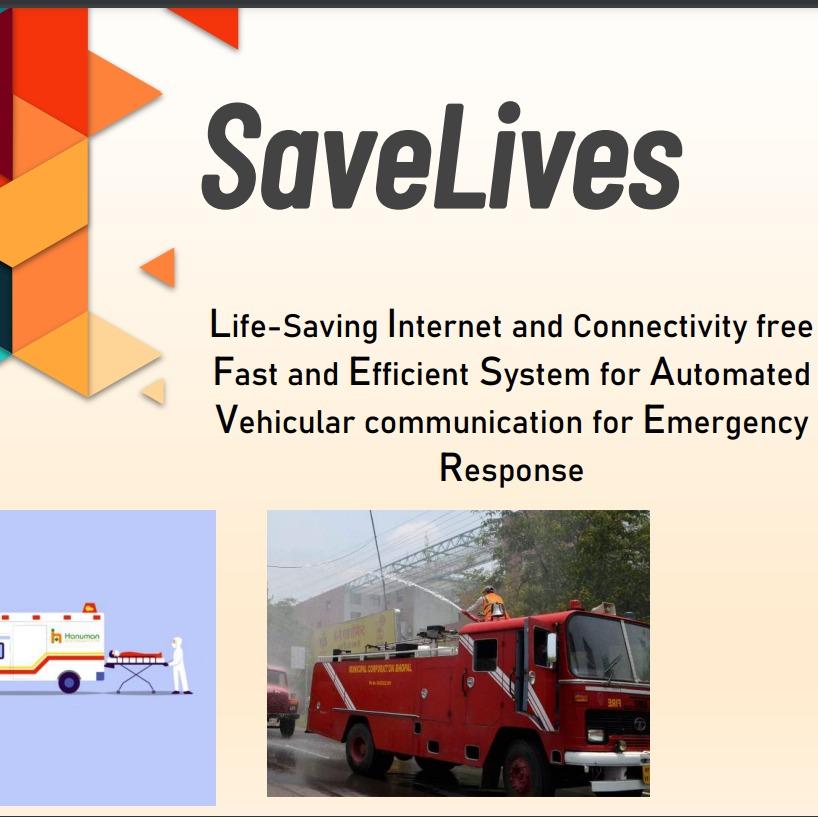SaveLives
A fast, simple, inexpensive, reliable, and efficient system for vehicular communication for emergency response.
Created on 6th March 2023
•
SaveLives
A fast, simple, inexpensive, reliable, and efficient system for vehicular communication for emergency response.
The problem SaveLives solves
30% of deaths are due to the inability of emergency services to reach in time due to traffic
congestion. An ambulance siren, can't be heard in a target vehicle until the emergency vehicle is less
than 1-2 meters away. Research shows that traditional siren and light system is effective up to a few meters only, and only
26% of drivers can tell the direction of an ambulance without visual cues, leading to a waste of
precious time. Soundproofing in cars, loud music systems, long traffic jams, and fog in winter further
aggravate the problem, leading to massive delays in the delivery of emergency services and the loss
of precious lives. We talked with firefighters and the drivers of ambulances and fire brigades. We went to nearby
hospitals and had a conversation with the ambulance department. We found that traffic on roads,
especially near traffic signals, is a significant reason for the delay in the delivery of emergency
services. The project aims to make a communication system between emergency response vehicles, other
vehicles moving on the road, and traffic signal systems to enable Emergency Response vehicles to
reach their destinations faster. The system will not require the internet for communication.
The project includes the transmission of radio signals by the Emergency-Response Vehicle. It
transmits its GPS Location through the radio signal. If a traffic light system receives the signal, it
shows green light to that lane and a red to others and regulates the time durations using the GPS
Coordinates. The system will also show an indicator to alert other people driving on the road if there is an
emergency vehicle behind their car. Traffic signals will work according to the needs of an emergency vehicle and due to the indicator much more time will be available for the non-emergency vehicles to give way to emergency vehicles. It will
save many lives by providing medical aid much faster.
Challenges we ran into
We thought that building a simple signal-based embedded system electronic circuitry is enough but later found out that integrating it with artificial intelligence and GPS is extremely important. We had discussions on the size, shape, and cost of the chip to be installed and arrived at a conclusion that it must be at a nominal price so that the masses can afford it which is also why we had to cut down the price points at several places. We also had a debate on whether or not we should directly handover this over to the transport department of the Indian government but felt the need to refine it a bit.
Tracks Applied (2)
Software
Hardware
Technologies used
